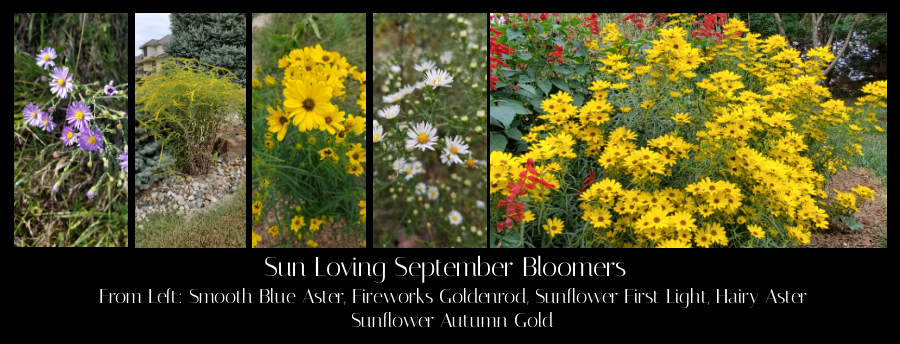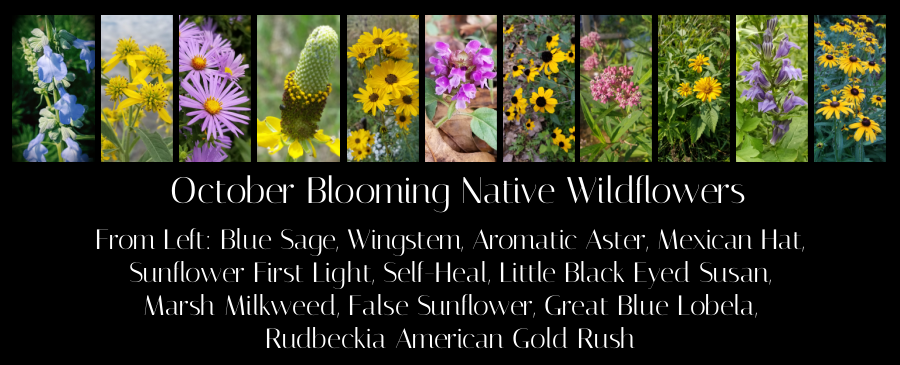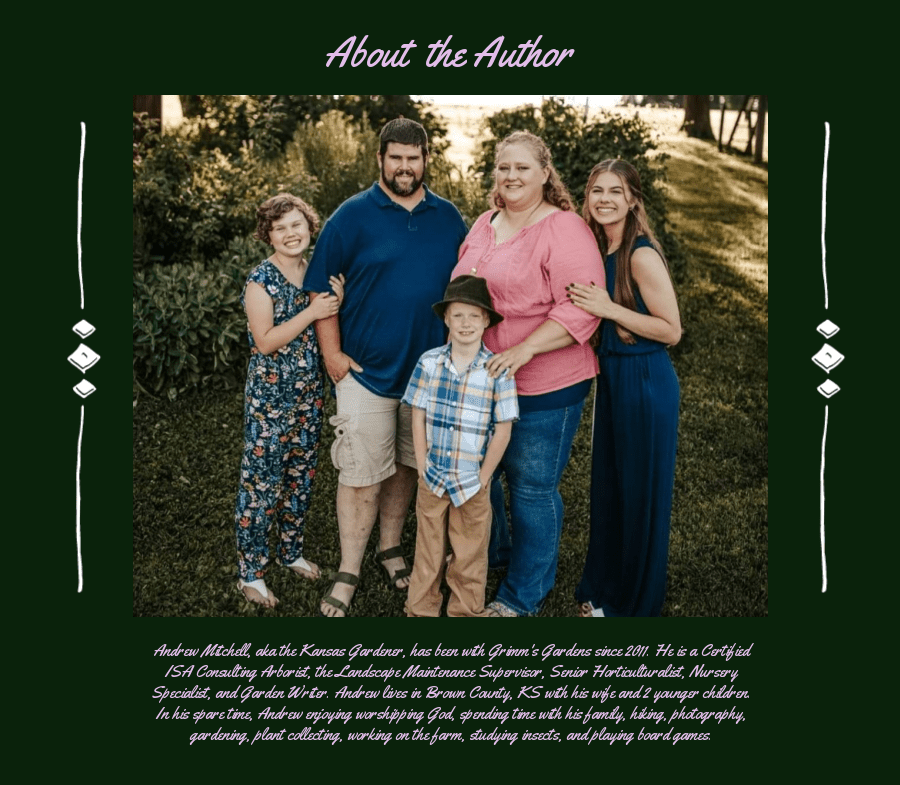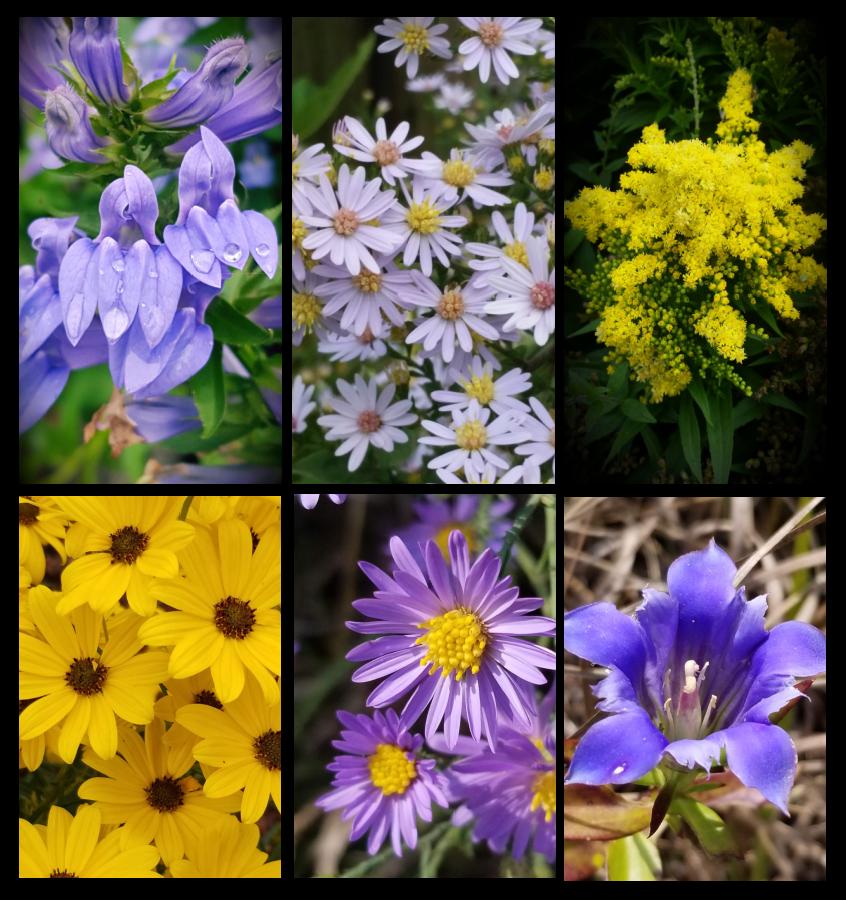Late summer and into fall is a hard time for native wildflowers. While there are many things still blooming from earlier, not much gets going this time of the year. Except for aster and goldenrods, the 2 big powerhouses of late summer blooms. Even though not much else starts to bloom now, you can still enjoy your gardens, especially if you have native grasses. They will have bloomed by now, and are just starting to turn color.
Soon, late season insects, birds, and other wildlife will be taking advantage of the flower and seed production of many of these natives. As long as the weather holds, there will be flowers. And with aromatic aster, there will be flowers even after a hard freeze. Some of our natives are very resilient, being able to cope with adulterated weather and climate. Why do we plant natives again?
- Adaptability and resistance to climate alterations and change.
- Drought and heat tolerance in most species
- Insect pollination partnership (means they are pollinated more by native insects than alien plants are).
- Insect host plant partnership
- Sustainability in the landscape.
- And because they are pretty!
Native Wildflowers Beginning to Bloom in August
There are actually quite a few more than what is on this list. Perhaps hundreds more within the Central Great Plains and the Midwestern regions. But these are some of the best for gardeners to plant and grow in their gardens.
Sun Loving Native Wildflowers
Button Blazingstar – Liatris aspera
Blazingstars are my favorite genus of plants. When you see what they can do together, mixed between a cottage garden, meadow, and prairie, you will see why I love them. The button blazingstar grows 2 to 5 feet tall and 1 foot wide. It has purple pink flowers which are round and button-shaped as they bloom on the stems. They attract a lot of pollinators, especially bees and butterflies.
Showy Goldenrod – Solidago speciosa
When we started selling this plant at Grimm’s Gardens, I had never heard of it. But I was surprised I knew it, just not by its name. Showy goldenrod forms large clumps or colonies of plants in a sunny, hot location. The plants grow 1 to 2 feet tall. And like all the goldenrods, they are visited by bees, butterflies, moths, beetles, wasps, and flies. Several moths species use them as host plants.
Ironweed Iron Butterfly – Vernonia lettermanii cultivar
This cultivar of New York Ironweed has capture my fancy ever since I added it to my Sunny Cottage Garden in 2019. The plants only grow 1 to 2 feet tall and wide, and are covered in bees and butterflies when blooming. When not blooming, the fine-textured foliage is a great contrast in the garden.
Prairie Dock – Silphium terabinthinaceum
One of the longest lived perennial plants, prairie dock can take 3 to 5 years just to get its roots right before blooming. Sometimes, they will form flower buds on new seedling plants, and then once planted, reset their roots before reflowering. One of the plants in my Meadow Garden bloomed for the first time in 2022, 4 years after planting. Prairie dock has huge leaves, and the plants grow 3 to 4 feet across. The flower stalks can reach between 4 to 10 feet tall. It attracts anything that likes sunflowers, namely bees, butterflies, moths, and flies.

Shade Or Wetland Loving Natives
Giant Goldenrod – Solidago gigantea
One of my favorite goldenrods, it starts blooming in the ditch between my front yard and the neighbor’s driveway. The large plants prefer a moist soil, though they seem to be pretty drought tolerant. I have let it reseed some into the sunnier parts of my Entry Garden, to fill in until the trees canopy takes over. Giant goldenrod grows 4 to 8 feet tall and forms a dense colony. Bees, butterflies, moths, beetles, and wasps are favorite visitors of the flowers.
Elm-leaf Goldenrod – Solidago ulmifolia
One of the best goldenrods in our area for part shade conditions. In the wild, it grows in glades and on the edge of woodlands. In the garden, it prefers protection from late-afternoon sun and heat. The flowers are curved like little arcs of golden light. It grows 2 to 4 feet tall and wide in small patches or colonies. Bees, butterflies, wasps, and beetles all visit the flowers.
Wingstem – Verbesina alternifolia
One of the few late summer native wildflowers to prefer both shade and moisture conditions. I often find it growing singly or in large clumps along ditches, streams, creeks, and ponds, throughout the Central Great Plains. The bright yellow flowers are like little sunflowers. Wingstem has wings of plant material on the stems, distinguishing it from other members of this genus. It grows 4 to 8 feet tall. Flowers are visited by bees, butterflies, and wasps.
Virgin’s Bower – Clematis virginiana
This is the plant that garden centers should be selling, instead of the invasive Sweet Autumn clematis from New Zealand. Virgin’s bower not only looks similar to the other, but it is native and supports native wildlife. A few moths actually use it as a host plant. The flowers are white and very fragrant. The vine can grow 6 to 15 feet in one season, but rarely does without adequate sunlight. I often find it in the woods.

Native Wildflowers Beginning to Bloom in September
Just like August, this list could be a lot bigger. But the following wildflowers are the best species for meadow, prairie, or cottage style gardens, without the runaway or disappearing act of other native species when introduced into the landscape.
Sun Lovers
Sunflower Autumn Gold – Helianthus salicifolius cultivar
While there are a lot of native sunflowers which could be utilized in a prairie or even a woodland garden, I like these cultivars for their tidy habits. And their flower powers. Autumn Gold is a great return bloomer, built on a small stature. It grows 4 to 5 feet tall and wide, unlike the 12 foot height of the native willowleaf sunflower species. Bees, butterflies, moths, and flies all attend the flowers. And several species of moth use sunflowers as a host.
Sunflower First Light – Helianthus salicifolius cultivar
When I first decided to trial willowleaf sunflower cultivars, this was my first one. I started with it in 2018, hoping to have a hardy cultivar which would not have the overwhelming height of the true species. I have been very happy with First Light, though it can be difficult to find for nurseries. The flowers are on straight stems, growing 3 feet tall and wide. Bees, butterflies, and flies all visit the flowers. Along with aromatic aster, it is the last plant to bloom in my garden in Northeast Kansas.
Goldenrod Fireworks – Solidago rugosa cultivar
In the last 10 years, I have seen this cultivar jump to one of the best selling goldenrods for home garden use. And why not? It does spread outward, but slowly, to form a large clump or colony. The flowers are arching on 3 to 4 foot stems. And the flowers are dainty, all along the stalks. Bees, butterflies, beetles, moths, wasps, and flies all visit the pollen and nectar rich flowers.
Smooth Blue Aster – Symphyotrichum laeve
A little known aster in commercial use, smooth blue is one of those native wildflowers you just have to have once you find out about it. I added it to my Monarch Waystation in the summer of 2018, and it mixed right in with the milkweeds, Culver’s root, and grasses. The leaves of the plant are smooth and long, while the sky-blue flowers are a pretty color among all the yellows and whites of late summer bloom. Bees are the main visitors to the flowers.
Hairy Aster – Symphyotrichum pilosum
Also called oldfield white aster, this leaves of this plant are surely very hairy indeed. It erupts in white in large areas of prairies, meadows, ditches, and glades throughout the Central Great Plains. While it is not known in gardens, at least not that I have seen, it does well in a meadow or prairie. Mix it into an established garden and you will be rewarded with all the insects visiting the flowers. It grows 2 to 4 feet tall and can form dense colonies.

Shade or Wetland Native Wildflowers
Gentian True Blue – Gentiana hybrid
While most gentians are hard to grow or transplant, this hybrid species is relatively easy to take care of. The only point of note is that it is not drought tolerant, unlike many of the other species of gentians. But, as for late season blooms, they really are blue. The plants are 1 foot tall and wide, and the flowers are visited by bees mainly.
Obedient Plant – Physostegia virginiana
One of the prettiest late blooming purple flowers, obedient plant is thus called because you can move the flowers on the stem and they stay were you move them. The tubular flowers are pollinated by long-tongued bees and hummingbirds mainly. Plants grow 4 to 6 feet tall depending on how much shade and moisture they get.
New England Aster – Symphyotrichum novae-angliae
There are a lot of cultivars of New England aster in the nursery trade, from dwarfs to differing color traits. The straight species is usually purple, but could be pink, mauve, white, or pale pink. In the neighbor’s ditch to my west, I discovered several shades of pink. And in my own ditch, I found a mauve variety which was in danger of being mowed down. It grows 3 to 8 feet tall and can form large clumps by rhizomes. Flowers are pollinated by bees, butterflies, and flies mainly. It is a host plant for several moths.
Drummond’s Aster – Symphyotrichum drummondii
Pair this shade loving aster with elm-leaf goldenrod for a 1-2 punch in the woodlands. It grows in individual clumps, 1 foot wide by 1 to 3 feet tall. The flowers are light blue or white, occasionally pink. And they are pollinated by bees, wasps, flower flies, and butterflies.

Native Wildflowers Still Blooming from Before August thru September
- Blanketflower
- Agastache Blue Fortune
- Giant Cat Hyssop
- Allium Millenium
- Nodding Wild Onion
- Marsh Milkweed
- Whorled Milkweed
- Coreopsis Zagreb
- Purple Coneflower
- Joe Pye Weed
- Common Boneset
- Sneezeweed
- Prairie Blazingstar
- Button Blazingstar
- Dotted Blazingstar
- Virgin’s Bower
- Purple Poppy Mallow
- Rattlesnake Master
- Compassplant
- Cup Plant
- Prairie Dock
- Wild Senna
- Blunt Mountain Mint
- Tall Phlox
- Rose Mallow
- Cardinal Flower
- Rudbeckia Henry Eilers
- Royal Catchfly
- Giant Goldenrod
- Elm-leaf Goldenrod
- Rose Verbena
- Woolly Verbena
Natives Still Blooming in October
- Marsh Milkweed
- False Sunflower
- Great Blue Lobelia
- Mexican Hat
- Rudbeckia American Gold Rush
- Little Black-Eyed Susan
- Self-Heal
- Aromatic Aster
- Wingstem
- Blue Sage
- Drummond’s Aster
- Sunflower First Light
- Sunflower Autumn Gold

Conclusion
These lists of natives and native wildflowers are by no means extensive. I have just chosen what are in my opinion the best garden worthy plants. I know of hundreds of native plants, many of which just pop up into my Meadow Garden, without me doing anything. And I love it. Natives can be unpredictable, and aggressive at times, but without them we would not have the diversity of insects and animals which cohabitate alongside us.
Happy planting!




